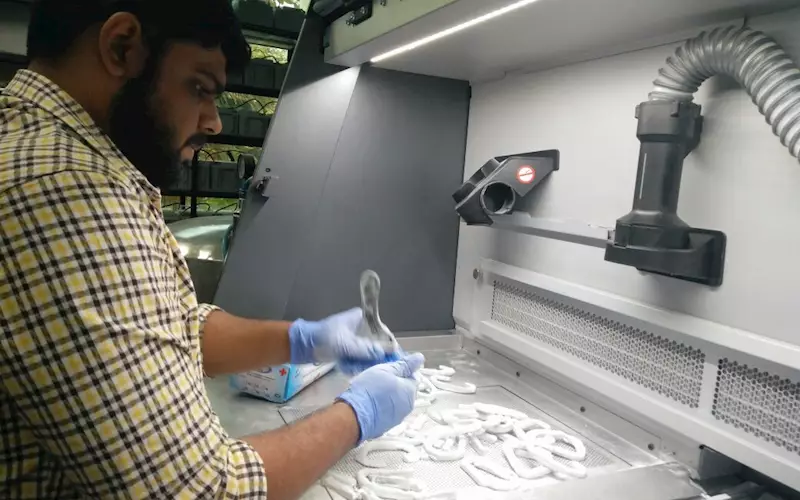Mumbai-based Imaginarium, unveiled India’s first commercial 3D printer by HP, the HP Jet Fusion 3D 4200 printing solution during a press conference held on 23 January 2018. At the event, Imaginarium demonstrated the machine’s disruptive prototyping and manufacturing capabilities as well as outlining their go to market strategy as one of the first reselling partners of the product in India.
The Jet Fusion 3D printing solution was commercially launched by HP in the country on 17 January 2018. Imaginarium is the first customer of the system in India and the machine has been installed at its additive manufacturing facility in Mumbai.
Addressing the media, Atit Kothari, business development – leadership team at Imaginarium said, “ Imaginarium has always prided itself in being on the forefront of the 3D printing technology and our partnership with HP for its first commercial launch is a logical step in that direction. We believe this will disrupt the Indian manufacturing sector in particular and open up new avenues for the creative Indian mind.”
He added, “We are excited with this partnership and hope to accelerate its adoption across the length and breadth of the country and more importantly explore greenfield opportunities as well.”
According to Imaginarium, with the HP Jet Fusion 3D 4200, it will be targeting the entire manufacturing spectrum including auto, appliances, electronics, and healthcare. Kothari said, “Awareness, ease of use and the technical superiority of this technology is what Imaginarium would focus on for the coming months.”
“The manufacturing sector of India has the potential to reach USD one trillion by 2025 and India is expected to rank amongst the top three growth economies and manufacturing destination of the world by the year 2020,” informed Kothari.
During the media demonstration, a functional lock-key and a carabiner, two of the most common applications relevant in various industries, were printed at the rate of 11 secs/per layer of 80 microns. The entire process, from uploading the designs on HP build platform to final output took three hours for 40 pieces each of lock-key and the carabiner.
Presently, the material being used to print is plastic and there are plans to incorporate metals and alloys in the near future.














 See All
See All